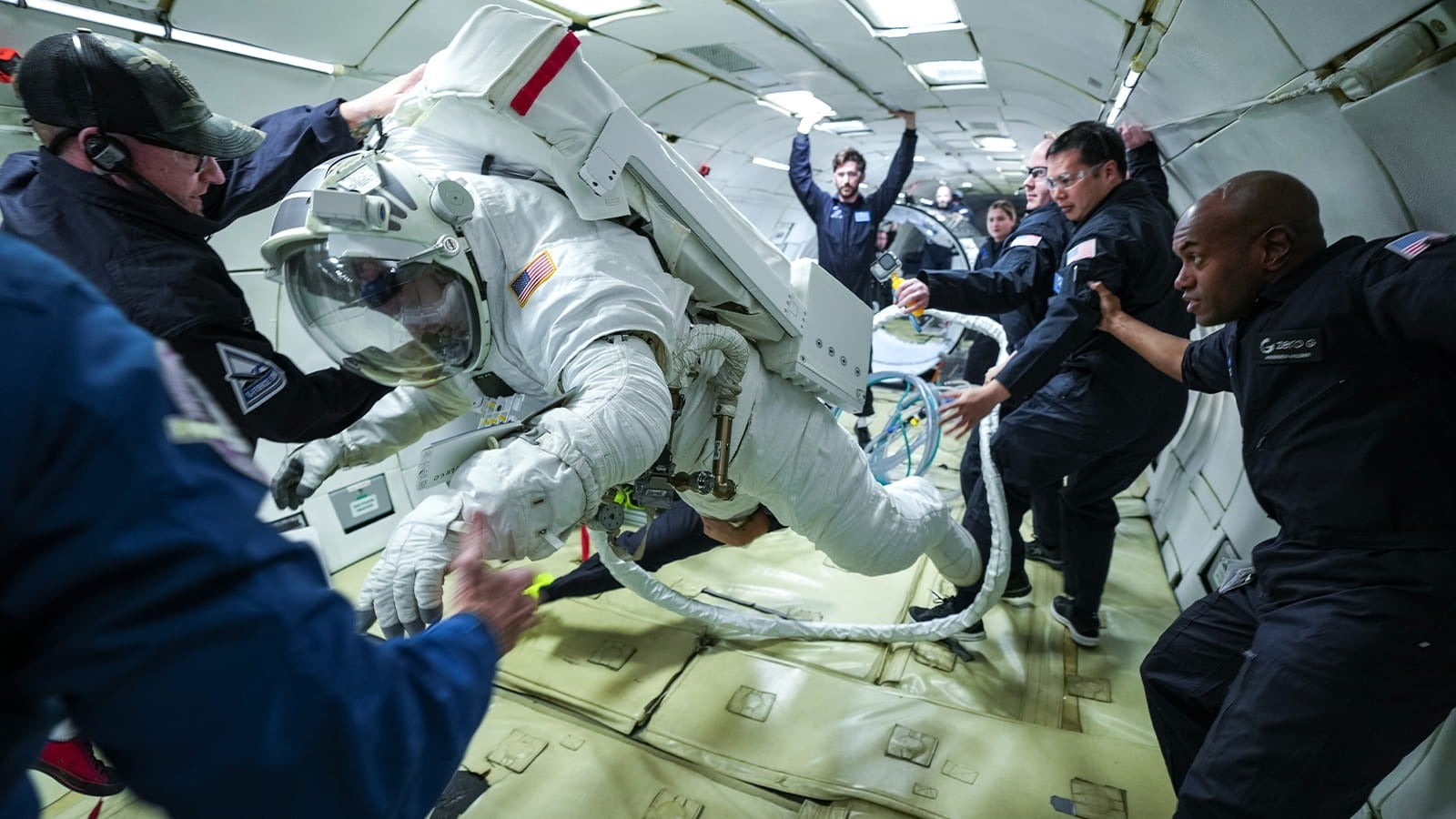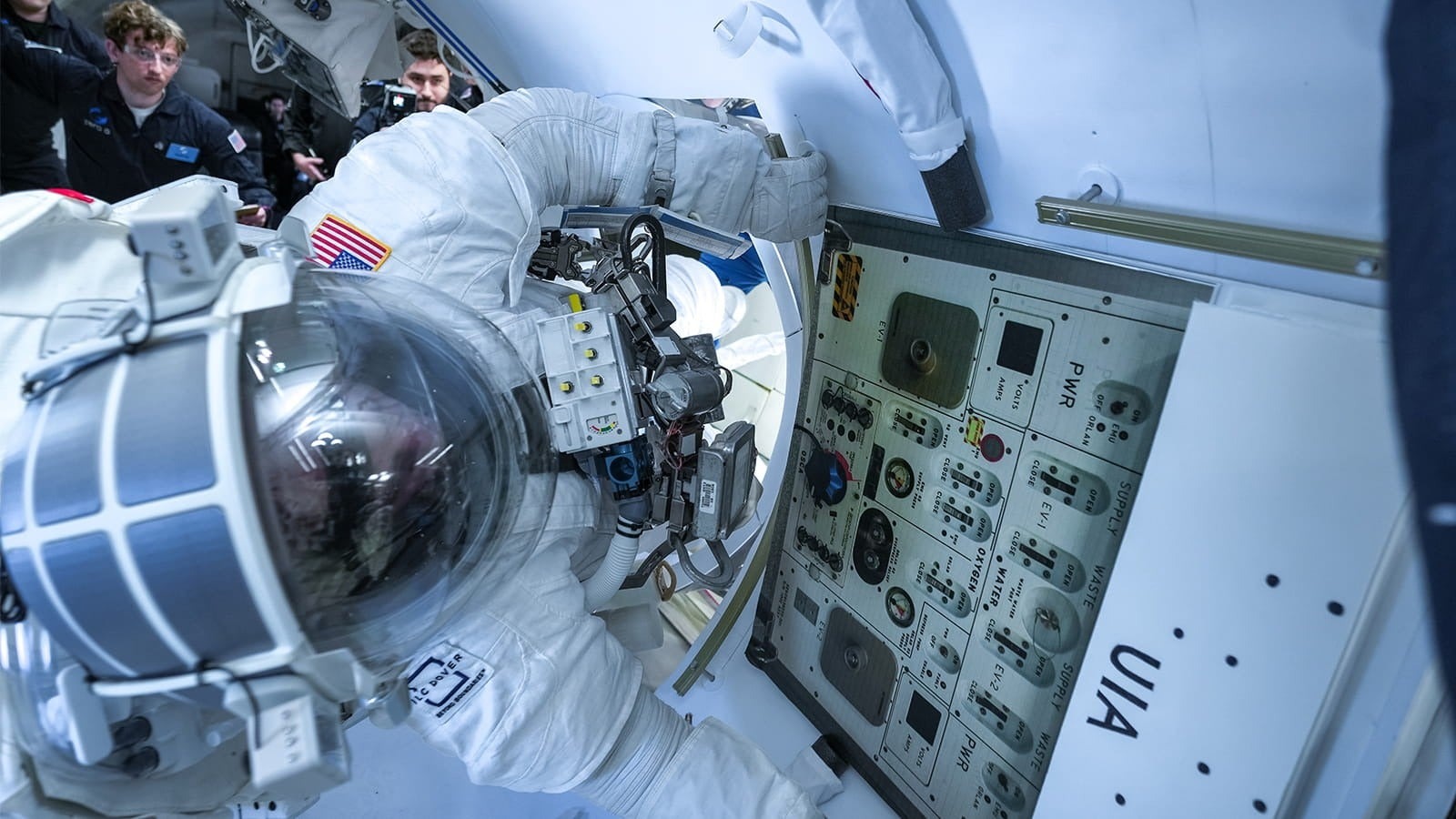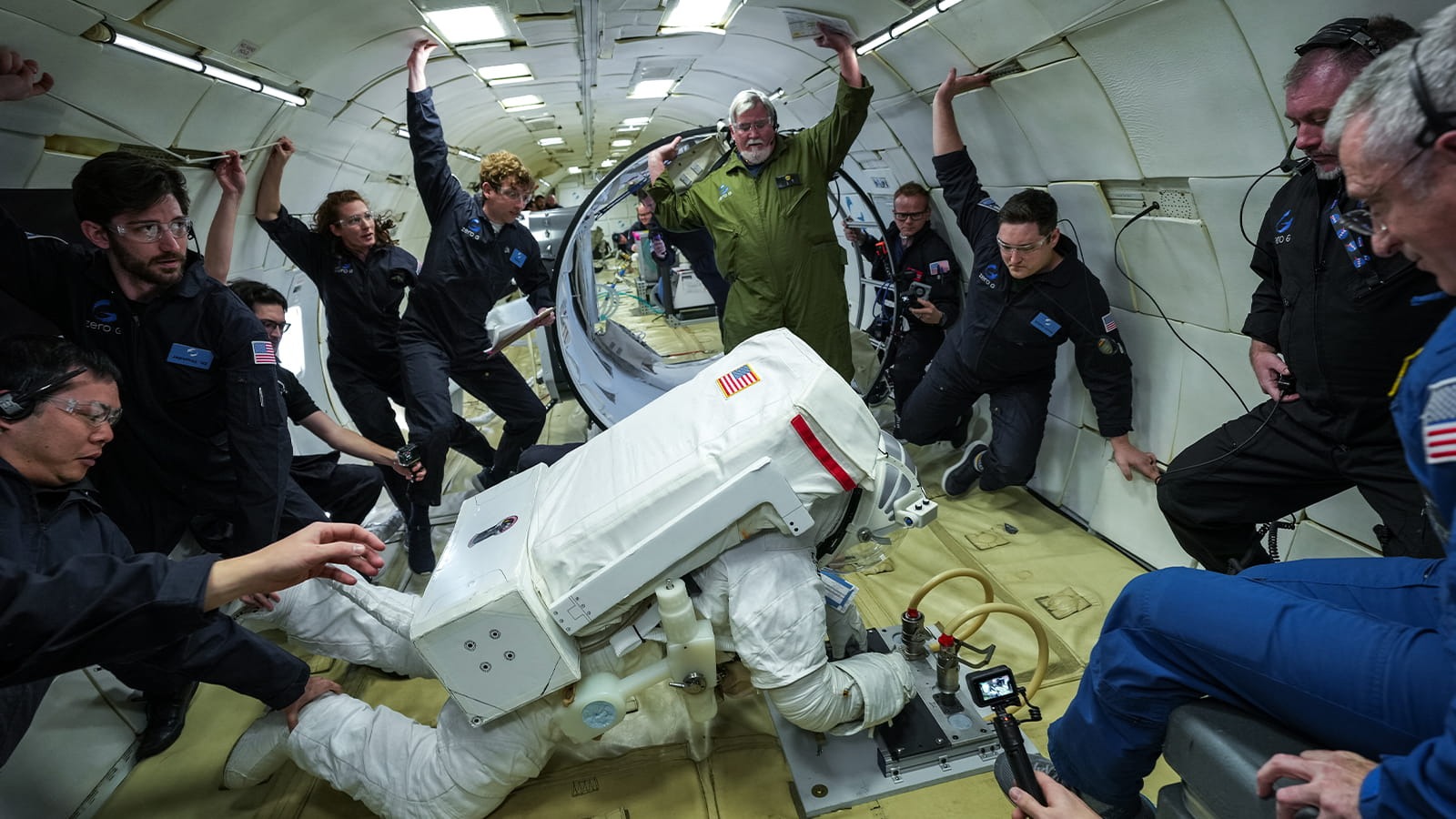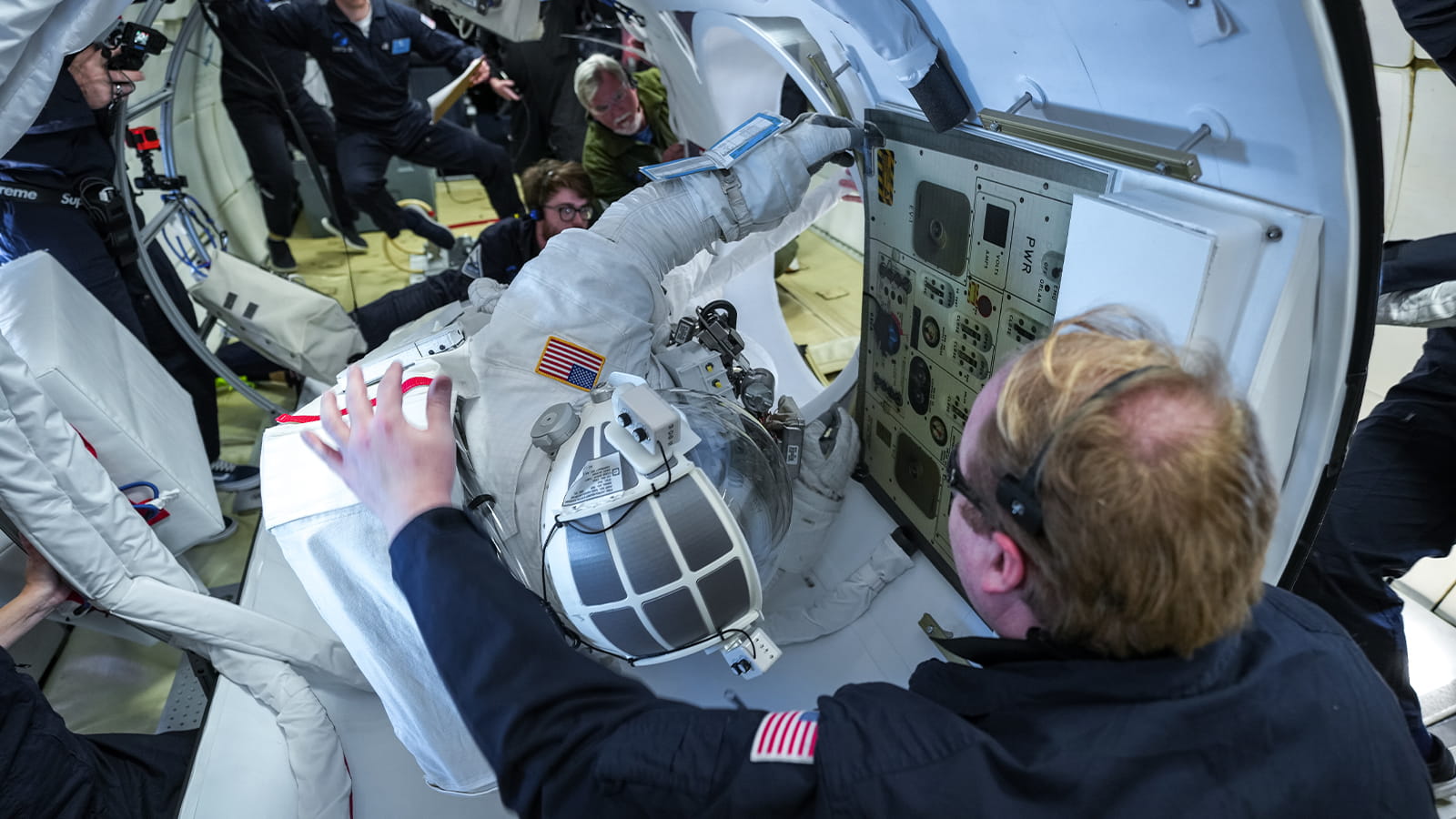NASA’s current spacesuits for the International Space Station (ISS) have been used by astronauts for more than 40 years, so they require urgent replacement. Collins Aerospace, together with ILC Dover and Oceaneering, has developed a new spacesuit that meets modern requirements. This project was implemented under a USD 97.2 million Exploration Extravehicular Activity Services (xEVAS) contract received from NASA in December 2022. Recently, the space agency conducted tests of new spacesuits in artificial microgravity conditions on a special aircraft.

After the successful completion of this stage, NASA may grant permission to test next-generation spacesuits in 2026, when the crew uses them during a spacewalk to carry out repair work on the outer part of the ISS.

The need for new spacesuits arose due to problems with current models: leakage of heat carriers, limitations in mobility, as well as outdated technologies. These disadvantages became critical because in 2022, astronaut Mathias Maurer discovered a leak in his spacesuit during a spacewalk, which led to the temporary suspension of all spacewalks.

The next-generation spacesuit from Collins Aerospace has a lower weight and volume compared to current NASA models, and its interchangeable architecture makes it easy to modify and improve. The development team collaborated with astronauts to create a versatile spacesuit suitable for future missions to the Moon and Mars.
After the microgravity test, additional tests are planned, including underwater and thermal vacuum tests. These critical checks in extreme conditions will make it possible to test the functionality of the spacesuit in a space-like environment.

Collins Aerospace’s efforts are part of an overall initiative to advance space research. The company received an additional USD 5 million from NASA to develop an EVA spacesuit for missions to the moon as part of the Artemis program. This project is designed to improve the safety and efficiency of astronauts during spacewalks and is part of a strategy to prepare for future missions to the moon’s surface.
Earlier we talked about the history of the creation of spacesuits.
According to RTX
Follow us on Twitter to get the most interesting space news in time
https://twitter.com/ust_magazine


